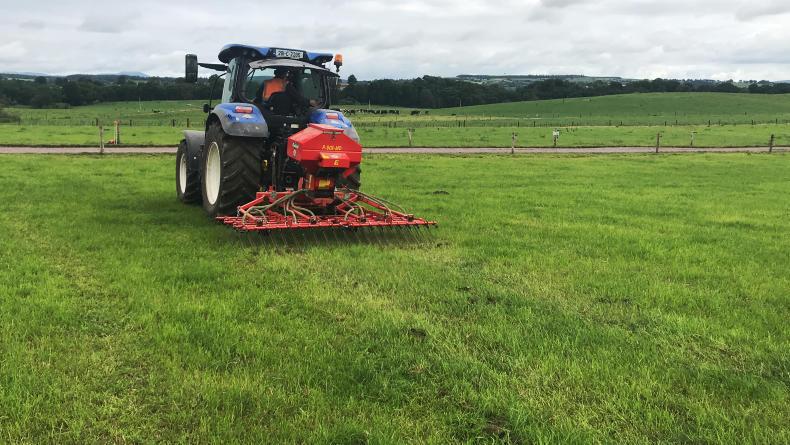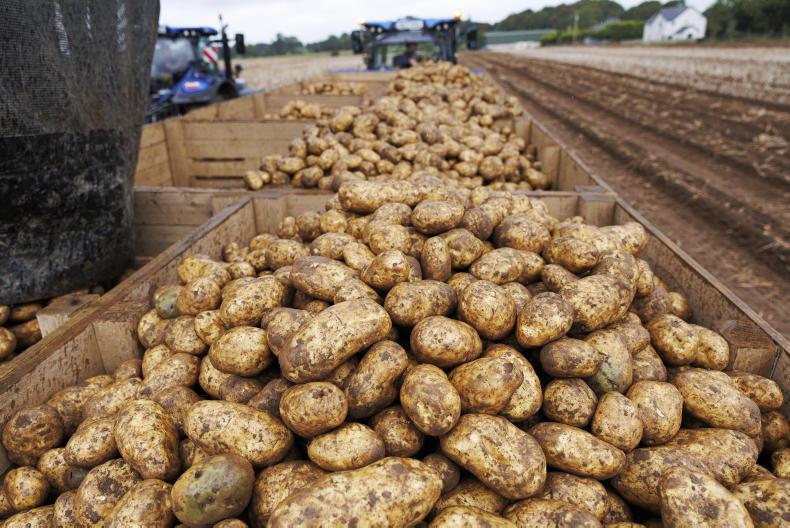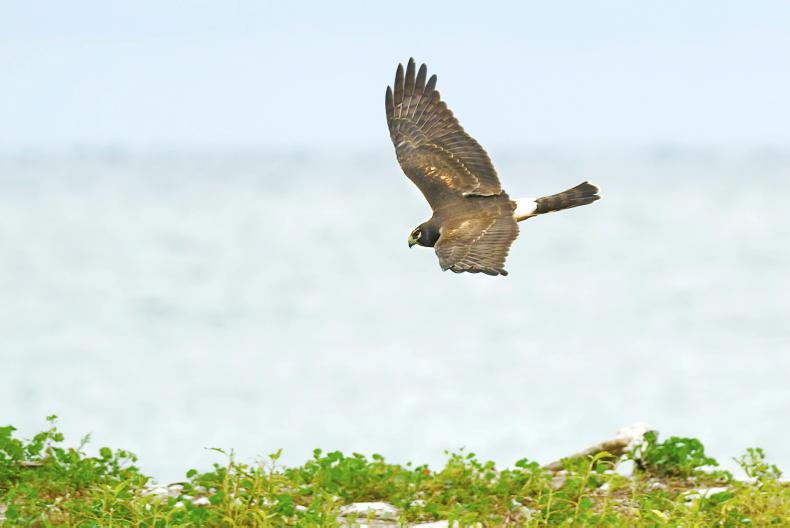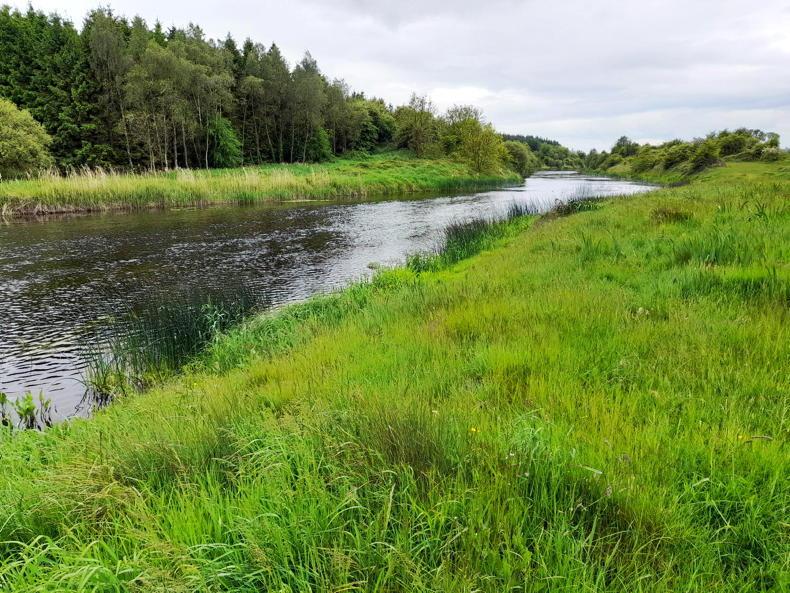As the manager of any team will tell you, you need players for all occasions; a mullocker for hard slogs on wet days, a sprinter for sunny days and hard ground and a star performer who always peaks in the second half of the game when other players get tired.
In farming parlance, the reliable player that peaks in the second half is clover. Eight years of research data from Teagasc Clonakilty and Moorepark has shown that clover delivers more milk solids, more grass and more profit.
Milk solids increased by 7.5% on grass and clover swards in Moorepark while it was an 11% increase in Clonakilty. An extra 1.2tDM/ha was grown in Clonakilty and an extra 0.4tDM/ha was grown in Moorepark. The bottom line from the Clonakilty study is that net profit increased by €305/ha to €2,674 where clover was incorporated.
So yes, clover is a star performer. However, like all stars it’s not easy to establish and it takes extra management. Also, the results from Clonakilty are based on an application rate of 250kg N/ha of chemical nitrogen. Most of the mood music around clover is in the context of reduced chemical nitrogen usage.
The research at Moorepark has looked at the performance of grass clover swards with 150kgN/ha and found that milk solids increased by 33kg/cow and grass growth was the same at 13.6tDM/ha on grass and clover swards. Research on lower levels of chemical nitrogen only commenced in Clonakilty last season. The latest progress report from both studies is presented in Table 1.
Results
The Clonakilty study is comparing two nitrogen rates, 250kgN/ha and 150kgN/ha under grass only and grass and clover swards. Both clover treatments are outperforming grass-only treatments in terms of current and cumulative milk solids yield. Cumulative grass growth is highest in the grass and clover 250kg N/ha and lowest in grass only 150kg N/ha but is the same for the grass-only 250kg N/ha and grass and clover 150kg N/ha.

Red clover sown in a plot in Moorepark.
The Moorepark study is looking at grass only with 250kg N/ha and grass and clover at 150kg N/ha and 100kg N/ha. Current milk solids performance is similar for all three treatments, while cumulative performance is greater for the clover treatments. Grass grown to date is similar for all three treatments but slightly higher for the grass and clover 150kg N/ha.
It’s important to state that all of these results are only a snapshot at a point and are not statistically analysed. This is very important when looking at data on nitrogen use and clover content as very often background nitrogen in the soil can influence growth rates so you would need to see data over multiple years to draw definitive conclusions.
Higher animal performance and pasture yield with less chemical nitrogen is far from proven in the Clonakilty study. Previous studies at Moorepark have shown higher animal performance and similar levels of grass growth with less chemical nitrogen.
It’s also important to state that clover is a second half of the year performer, so based on our knowledge from previous studies, it’s fair to say that the differences in performance in Table 1 is likely to increase as the season goes on.
Environment
Clover, along with other legumes fixes nitrogen from the atmosphere and puts it into the soil. This nitrogen acts in the same way as chemical nitrogen in that it is available for plant growth and can also be leached out of the soil and cause pollution. This fact is often omitted in the debate on nitrogen usage and water quality.
The main environmental benefit of clover is its ability to reduce greenhouse gas emissions.

Grass and clover reseeds at Moorepark.
Nitrous oxide is a potent greenhouse gas and is released in pulses after spreading chemical nitrogen. Nitrous oxide emissions are reduced to negligible levels when nitrogen is fixed by clover.
Furthermore, if less nitrogen is being manufactured, transported and spread, then greenhouse gas emissions associated with chemical fertiliser will fall further.
Farmers should look at clover in three ways.
Firstly, it has the potential to increase animal performance and pasture growth.
Secondly, it can reduce costs of production through lower fertiliser costs and finally, it can reduce greenhouse gas emissions.
Establishment
Establishing clover in the sward and maintaining clover at a high enough level to be beneficial is one of the biggest challenges facing farmers in the foreseeable future. The first part of that, establishing clover, is probably the easy part and maintaining clover in the sward is arguably a bigger challenge. Most farmers will identify clover on their farms but the quantity and quality of that clover in terms of its ability to improve performance and fix nitrogen is, in most cases negligible.

Cows grazing new grass and clover reseeds in Moorepark.
There are two ways of establishing white clover on a farm. The first is through a complete reseed and this is the most effective and also slowest and costliest way of getting clover on to a farm. The second method is over-sowing and this is a bit less reliable but offers the opportunity of getting more clover established in a faster period of time and at lower cost. Establishing clover in a reseed is straightforward; include clover in the seed mix and use clover safe herbicides for weed control.
Over-sowing is more complicated. Mike Egan is a grassland researcher at Moorepark and is running a number of trials looking at clover establishment on commercial farms.

Mike Egan, Moorepark.
This is his advice for over-sowing:
The clover seed can be broadcast on to the sward or stitched in using a suitable machine, such as the Einboch machine pictured. 
The Einboch machine used by Moorepark to over-sow clover.
Best practice to over-sow directly after grazing (less than 4 cm post-grazing sward height) or after cutting the paddock for surplus bales – it is not recommended to over-sow clover into dedicated silage paddocks.A slightly higher seeding rate (1.5kg/ac to 2kg/ac) is recommended for over-sowing compared to a full reseed. This is to overcome the issues with slugs and a lower germination rate.Sow clover with a fertiliser that contains phosphorus as this will favour establishment particularly if soil fertility is poor.– one bag of 0-7-30 or 0-10-20/acre.
– if possible, reduce N fertiliser post over-sowing.
Soil contact post sowing is one of the most crucial factors affecting germination. Ideally, over-sow on well-managed grassland – not suitable for old “butty” swards with a low content of perennial ryegrass – if this is the case a full reseed is best practice.The cost of clover seed is between €8/kg and €10/kg so the seed costs of over-sowing clover is between €12/ac and €20/ac.
In Solohead, where clover with zero nitrogen is being trialled, the strategy is to do a full reseed every 10 years and oversow every five years.
Success with over-sowing varies, with Mike suggesting that about 25% to 30% of over-sowing doesn’t deliver desired results.
“Every time we over-sowed a field we got establishment. However, clover didn’t last in every field for a variety of reasons but where the guidelines are followed we have got good results,” Mike says.
An Einboch grass harrow with air seeder is the machine used for the Moorepark trials.
Mike says the main reason this machine was chosen is that it is lightweight and easy to be moved around the country.
Other machines such as Güttler, Moore Unidrill and other drills are available and effective.
The advantage of these machines over broadcasting is that seed to soil contact is increased and seed distribution is even.
Broadcasting with fertiliser can be used successfully to get clover established but a slightly higher seeding rate is required as less seeds will be viable.
Broadcasting has been successfully employed to boost clover percentages in some fields in Clonakilty. There, farm manager Fergal Coughlan spreads clover seed with 0:10:20 or 0:7:30 fertiliser, mixing the desired amount of seed into the spreader with one 50kg bag of fertiliser to do one acre.
In my opinion, broadcasting will probably be a more user-friendly and lower-cost option if a device could be developed to accurately dispense the required amount of seed through a tube to the base of the fertiliser spreader, above the discs or wagtail.
This would allow for more area to be covered per fill and would avoid the risks of the seed settling in the spreader when it is mixed with the fertiliser.
Read more
Opinion: special treatment for methane is good news for dairy
Rain for most but challenges remain
As the manager of any team will tell you, you need players for all occasions; a mullocker for hard slogs on wet days, a sprinter for sunny days and hard ground and a star performer who always peaks in the second half of the game when other players get tired.
In farming parlance, the reliable player that peaks in the second half is clover. Eight years of research data from Teagasc Clonakilty and Moorepark has shown that clover delivers more milk solids, more grass and more profit.
Milk solids increased by 7.5% on grass and clover swards in Moorepark while it was an 11% increase in Clonakilty. An extra 1.2tDM/ha was grown in Clonakilty and an extra 0.4tDM/ha was grown in Moorepark. The bottom line from the Clonakilty study is that net profit increased by €305/ha to €2,674 where clover was incorporated.
So yes, clover is a star performer. However, like all stars it’s not easy to establish and it takes extra management. Also, the results from Clonakilty are based on an application rate of 250kg N/ha of chemical nitrogen. Most of the mood music around clover is in the context of reduced chemical nitrogen usage.
The research at Moorepark has looked at the performance of grass clover swards with 150kgN/ha and found that milk solids increased by 33kg/cow and grass growth was the same at 13.6tDM/ha on grass and clover swards. Research on lower levels of chemical nitrogen only commenced in Clonakilty last season. The latest progress report from both studies is presented in Table 1.
Results
The Clonakilty study is comparing two nitrogen rates, 250kgN/ha and 150kgN/ha under grass only and grass and clover swards. Both clover treatments are outperforming grass-only treatments in terms of current and cumulative milk solids yield. Cumulative grass growth is highest in the grass and clover 250kg N/ha and lowest in grass only 150kg N/ha but is the same for the grass-only 250kg N/ha and grass and clover 150kg N/ha.

Red clover sown in a plot in Moorepark.
The Moorepark study is looking at grass only with 250kg N/ha and grass and clover at 150kg N/ha and 100kg N/ha. Current milk solids performance is similar for all three treatments, while cumulative performance is greater for the clover treatments. Grass grown to date is similar for all three treatments but slightly higher for the grass and clover 150kg N/ha.
It’s important to state that all of these results are only a snapshot at a point and are not statistically analysed. This is very important when looking at data on nitrogen use and clover content as very often background nitrogen in the soil can influence growth rates so you would need to see data over multiple years to draw definitive conclusions.
Higher animal performance and pasture yield with less chemical nitrogen is far from proven in the Clonakilty study. Previous studies at Moorepark have shown higher animal performance and similar levels of grass growth with less chemical nitrogen.
It’s also important to state that clover is a second half of the year performer, so based on our knowledge from previous studies, it’s fair to say that the differences in performance in Table 1 is likely to increase as the season goes on.
Environment
Clover, along with other legumes fixes nitrogen from the atmosphere and puts it into the soil. This nitrogen acts in the same way as chemical nitrogen in that it is available for plant growth and can also be leached out of the soil and cause pollution. This fact is often omitted in the debate on nitrogen usage and water quality.
The main environmental benefit of clover is its ability to reduce greenhouse gas emissions.

Grass and clover reseeds at Moorepark.
Nitrous oxide is a potent greenhouse gas and is released in pulses after spreading chemical nitrogen. Nitrous oxide emissions are reduced to negligible levels when nitrogen is fixed by clover.
Furthermore, if less nitrogen is being manufactured, transported and spread, then greenhouse gas emissions associated with chemical fertiliser will fall further.
Farmers should look at clover in three ways.
Firstly, it has the potential to increase animal performance and pasture growth.
Secondly, it can reduce costs of production through lower fertiliser costs and finally, it can reduce greenhouse gas emissions.
Establishment
Establishing clover in the sward and maintaining clover at a high enough level to be beneficial is one of the biggest challenges facing farmers in the foreseeable future. The first part of that, establishing clover, is probably the easy part and maintaining clover in the sward is arguably a bigger challenge. Most farmers will identify clover on their farms but the quantity and quality of that clover in terms of its ability to improve performance and fix nitrogen is, in most cases negligible.

Cows grazing new grass and clover reseeds in Moorepark.
There are two ways of establishing white clover on a farm. The first is through a complete reseed and this is the most effective and also slowest and costliest way of getting clover on to a farm. The second method is over-sowing and this is a bit less reliable but offers the opportunity of getting more clover established in a faster period of time and at lower cost. Establishing clover in a reseed is straightforward; include clover in the seed mix and use clover safe herbicides for weed control.
Over-sowing is more complicated. Mike Egan is a grassland researcher at Moorepark and is running a number of trials looking at clover establishment on commercial farms.

Mike Egan, Moorepark.
This is his advice for over-sowing:
The clover seed can be broadcast on to the sward or stitched in using a suitable machine, such as the Einboch machine pictured. 
The Einboch machine used by Moorepark to over-sow clover.
Best practice to over-sow directly after grazing (less than 4 cm post-grazing sward height) or after cutting the paddock for surplus bales – it is not recommended to over-sow clover into dedicated silage paddocks.A slightly higher seeding rate (1.5kg/ac to 2kg/ac) is recommended for over-sowing compared to a full reseed. This is to overcome the issues with slugs and a lower germination rate.Sow clover with a fertiliser that contains phosphorus as this will favour establishment particularly if soil fertility is poor.– one bag of 0-7-30 or 0-10-20/acre.
– if possible, reduce N fertiliser post over-sowing.
Soil contact post sowing is one of the most crucial factors affecting germination. Ideally, over-sow on well-managed grassland – not suitable for old “butty” swards with a low content of perennial ryegrass – if this is the case a full reseed is best practice.The cost of clover seed is between €8/kg and €10/kg so the seed costs of over-sowing clover is between €12/ac and €20/ac.
In Solohead, where clover with zero nitrogen is being trialled, the strategy is to do a full reseed every 10 years and oversow every five years.
Success with over-sowing varies, with Mike suggesting that about 25% to 30% of over-sowing doesn’t deliver desired results.
“Every time we over-sowed a field we got establishment. However, clover didn’t last in every field for a variety of reasons but where the guidelines are followed we have got good results,” Mike says.
An Einboch grass harrow with air seeder is the machine used for the Moorepark trials.
Mike says the main reason this machine was chosen is that it is lightweight and easy to be moved around the country.
Other machines such as Güttler, Moore Unidrill and other drills are available and effective.
The advantage of these machines over broadcasting is that seed to soil contact is increased and seed distribution is even.
Broadcasting with fertiliser can be used successfully to get clover established but a slightly higher seeding rate is required as less seeds will be viable.
Broadcasting has been successfully employed to boost clover percentages in some fields in Clonakilty. There, farm manager Fergal Coughlan spreads clover seed with 0:10:20 or 0:7:30 fertiliser, mixing the desired amount of seed into the spreader with one 50kg bag of fertiliser to do one acre.
In my opinion, broadcasting will probably be a more user-friendly and lower-cost option if a device could be developed to accurately dispense the required amount of seed through a tube to the base of the fertiliser spreader, above the discs or wagtail.
This would allow for more area to be covered per fill and would avoid the risks of the seed settling in the spreader when it is mixed with the fertiliser.
Read more
Opinion: special treatment for methane is good news for dairy
Rain for most but challenges remain














SHARING OPTIONS